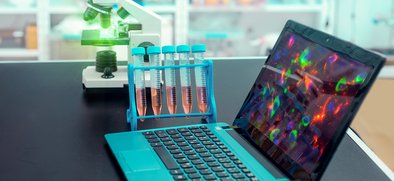What is real?
In the article "What is real? Direct microbiology in environmental analysis" Dr. Jiri Snaidr answers this question and describes several analysis methods that provide a realistic image of the microbial composition of a sample.
Abstract
The creation of a true image of sample can take place on different levels. In the simplest case, it is attempted to determine a sum parameter, for example the total viable count. But the dilemma starts already at this point. The total viable count refers to the part of the bacteria that is not only “alive” but is also able to grow and to duplicate. Thus, this parameter refers back to the method of cultivation, which, however, is not able to capture the natural microbiological proportions of a sample. To avoid this dilemma, there is the parameter “total plate count”. Here, all bacteria are detected, regardless of whether they are living, dead or cultivable. But in most cases, the indication of dead cells is irrelevant and only useful in the sense of pure bacterial mass. By contrast, the number of living, i.e. metabolically active cells, is much more important. For this, vital dyes are necessary, which are, however, error-prone. So, if not even a sum parameter provides an image of the reality – how can it be achieved with more complex parameters? In the article “What is real?” Dr. Jiri Snaidr answers this question and describes several analysis methods that provide a realistic image of the microbial composition of a sample.
Publication language: German

Quotation
Dr. Jiri Snaidr (2017): Was ist real? Direkte Mikrobiologie in der Umweltanalytik. In: LABO, Ausgabe 7-8/2017, p. 14 -16.